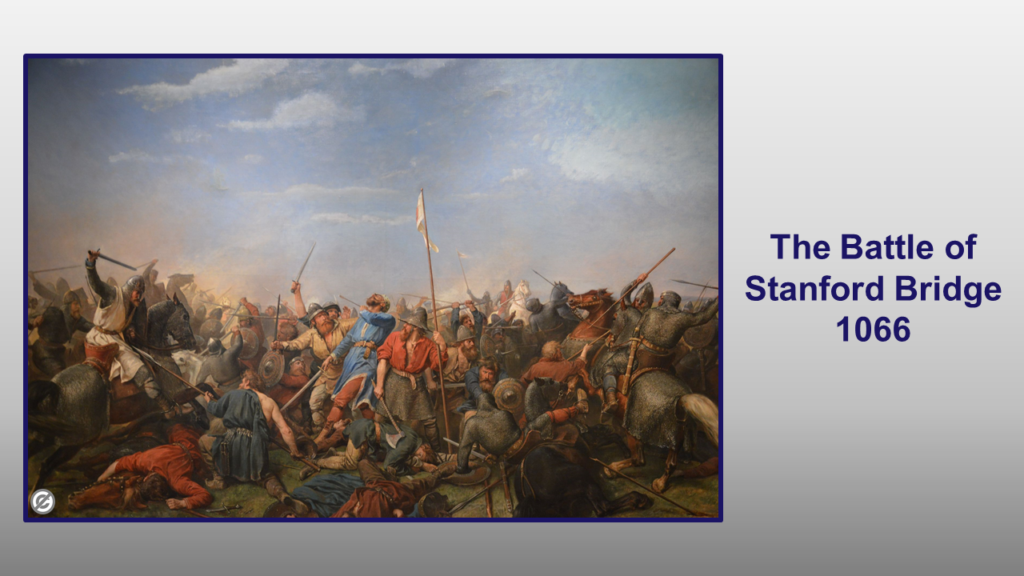Introduction
The battle of Stamford Bridge took place on the 25th of September.
For football fans (soccer), I am not talking about Manchester City’s victory over Chelsea, this weekend.
I am talking about the momentous events of the autumn of 1066.
1066
Harold Godwinson had seized the vacant throne of England.
However, he had several serious challengers, the strongest being William of Normandy.
Whilst waiting for the anticipated Norman invasion, Harold received reports that Harold Hardrada had landed near York with a Viking army.
He immediately headed north with his household troops and gathered further reinforcements on the way. He caught Hardrada unprepared and won a stunning but costly victory, at Stamford Bridge.
He did not have long to relish his victory before he was informed that William had landed at Pevensey with his army.
Leaving some troops in the north, he repeated his country long dash, but this time north to south.
On the 14th of October he confronted William near Hastings.
The English army was an infantry army formed around the housecarls, a professional elite, but the larger part of the army comprised the fyrd (local militias).
Harold formed his army up on Senlac Hill to await the Norman assault.
The Normans attacked up hill and were unable to make progress for much of the day
It was a long and hard-fought battle which remained very close until the end. Eventually with Harold and his brothers dead they broke through and routed the English force.
Opinions of History
The Battle of Hastings, as it would come to be called, changed the course of not only English but British history, ending centuries of Anglo-Saxon dominance.
Some historians believe that Harold’s precipitous dash south cost him the battle.
He left troops in the north and those who travelled were exhausted from the two forced marches and the Battle of Stamford Bridge.
It could also have been the larger number of professional soldiers on the Norman side, and the skillful use of combined arms. (Cavalry, infantry and archers).
Or, it could just have been luck.
Legend has it that Harold was killed by an arrow in the eye.
Had he not fallen could the English line have held?
Conclusion
We should be cautions what lessons we draw from history or past projects.
Had Harold been victorious, historians and military theorists would be extolling his dynamic, decisive and timely action to confront the threat.
Lessons for Project Managers
As project managers and human beings, we often come-up with the reasons that we want and best fit our biases and preconceived ideas.
Ask yourself:
- Are you drawing the correct lessons from past events?
- Could there be alternative reasons?
- Was it just luck?
Actions:
- Always think and question
- Use the 5 Whys (Detailed in a previous post on The History PM)

